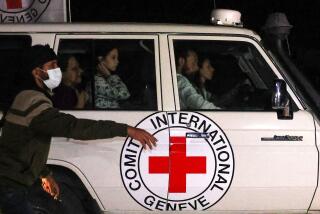Editor’s Note: Why we ran the photo of the Syrian toddler
As editors, we are constantly asked to make judgments about the photos we publish that document the mayhem in our troubled world: Beheadings of hostages, machete attacks on villagers, gunfire sprayed through a shopping mall, body cam video from police shootings — much of the time, we decide our readers don’t need to be shocked and sickened with the violence swirling around us. A story is enough.
Then came the image of the toddler lying face down on a beach in Turkey, drowned when the rubber boat that would have carried him to possible refuge in Europe capsized offshore. Our Middle East correspondent, Laura King, urged us to pay attention to it. She quickly filed a story with as much as she knew about what had happened to the family and described how the image had begun to rocket across social media.
Should we publish the photo?
These kinds of debates in newsrooms are not unusual. Foreign correspondents, a job I held for a number of years, often argue with editors that we have an obligation as journalists to make readers — and voters — more keenly aware of the costs of the wars the U.S. fights in foreign lands. Editors most often err on the side of protecting readers’ sensibilities, and whatever fragile privacy those wars’ victims manage to maintain.
As assistant managing editor for foreign and national news, I consulted with other senior editors, but to me, this one was in a category all its own. It was brutally disturbing, yes. But it promised to trouble our readers not by its violence, but by its searing sadness.
We have written stories about migrants suffocated in trucks, run over by trains, drowned in capsized boats, but these tragedies have unfolded largely unwitnessed; here was a boy — 3-year-old Aylan, we learned later — whose fate forced anyone who saw him to confront the magnitude of the migrant crisis unfolding in Europe and the Middle East. A crisis that our nation, through the wars it has fought in the region, had a hand in igniting. A human drama that has seen European nations struggle to confront the streams of refugees, some of them fleeing horrific violence, who have turned up pleading at their doors — while the U.S. admitted just 36 Syrian refugees in fiscal 2013.
Looked at that way, publishing the photo felt less like a gamble and more like an imperative.
NEWSLETTER: Get the day’s top headlines from Times Editor Davan Maharaj >>
MORE
The conflicts and failures behind the European migrant crisis
At military parade, Chinese president says nation will cut 300,000 troops
Defiant Kentucky clerk ordered to jail for refusing same-sex-marriage licenses
Iran’s supreme leader calls for parliamentary vote on nuclear pact, lifting of all sanctions
More to Read
Start your day right
Sign up for Essential California for news, features and recommendations from the L.A. Times and beyond in your inbox six days a week.
You may occasionally receive promotional content from the Los Angeles Times.






